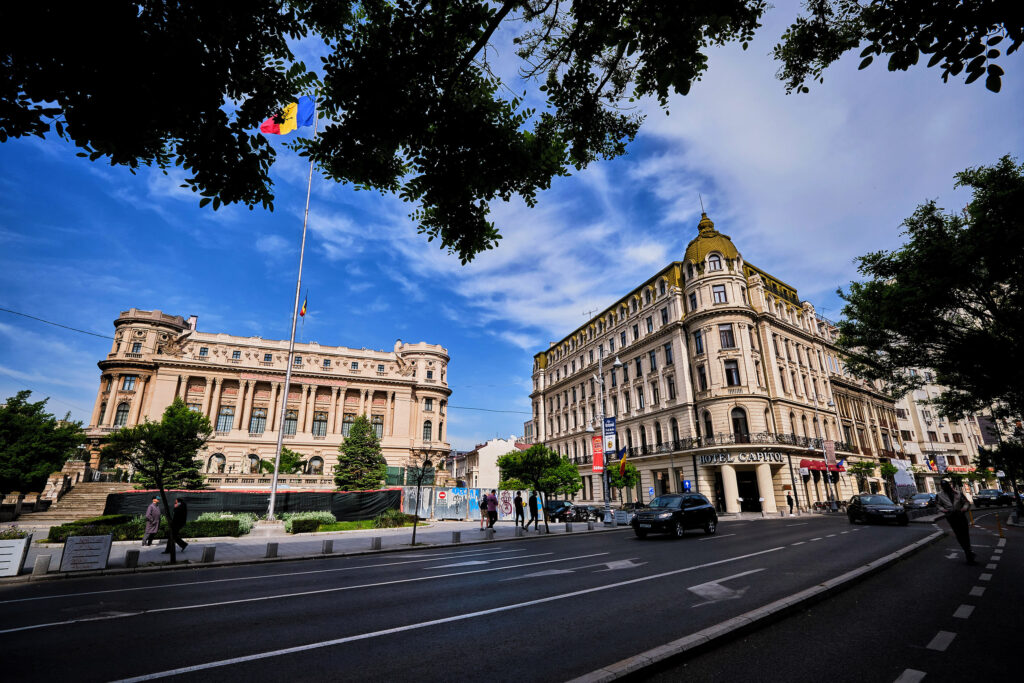With its red-tiled roofs that seem to watch us as we are wandering around its quaint streets, with the astounding panoramas of the Carpathians rising to the south and the gentle Transylvanian hills to the north, with a unique multicultural and multi-religious heritage that spans over many centuries, the city of Sibiu offers us the opportunity for an unforgettable experience!

Short Intro & History
The city of Sibiu is definitely among the most interesting places to visit in Romania, a fascinating destination teeming with treasures and secrets. This marvelous and majestic medieval fortress has developed into a modern city that still retains much of its authenticity. Once enclosed by several layers of defensive walls with towers, bastions, large squares and narrow cobblestone alleys, the city of Sibiu is one of those places where history comes alive. Walking around the superb town center, we always have something new to admire, from the Lutheran, Catholic or Orthodox churches to the elegant squares, and from the medieval towers and walls to the magnificent palaces or residences.

Part of the seven medieval fortresses created by the Transylvanian Saxons during the 12th century, Sibiu (Hermannstadt in German or Cibinium in Latin) was the biggest and wealthiest of them all, an important commercial and craft center during medieval times. Ever since the 14th century, the fortress had 19 attested guilds and the historical buildings of today’s city show its importance in the ensemble of central-eastern Europe of those times. Being under various rulings and influences for seven centuries, the city of Sibiu has managed to always keep its unique soul and atmosphere.
The first book in Romanian was printed in Sibiu, the first beer factory was established here and the first theater in the country was also established in this fascinating city. It has always been a center of Romanian spirit, even before the Great Union. During the Habsburg Empire, Sibiu was considered the second city after Vienna, strategically located near the eastern border of the empire and strongly fortified during a period of three centuries.
Search for Flights to Sibiu on Booking.com!
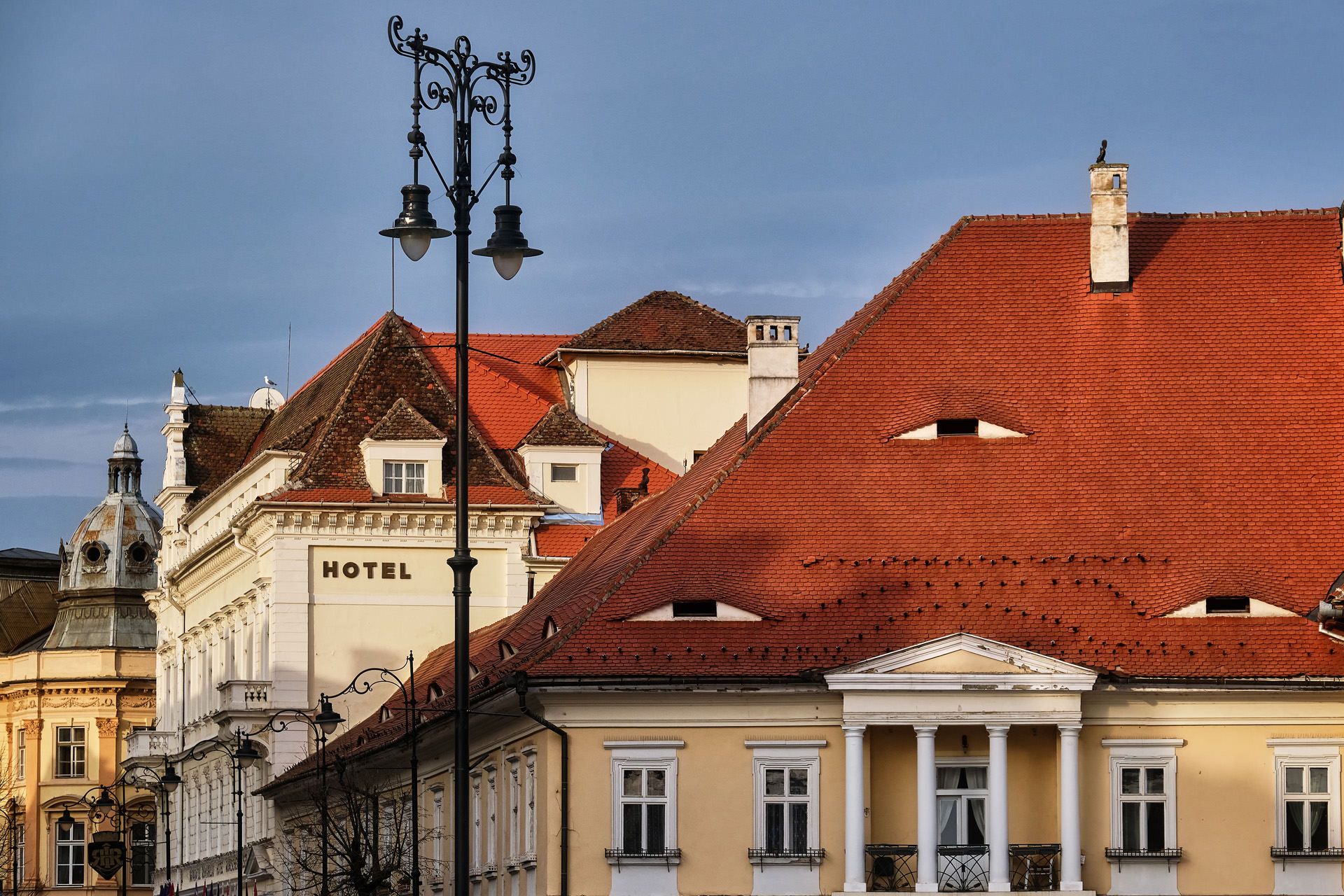


From its long history, the city of Sibiu still preserves an impressive cultural heritage, with large squares surrounded by historical buildings, imposing churches, defensive towers and walls. Developed around a complex of three enchanting squares and divided into the Upper and the Lower towns, Sibiu offers a fascinating travel experience!

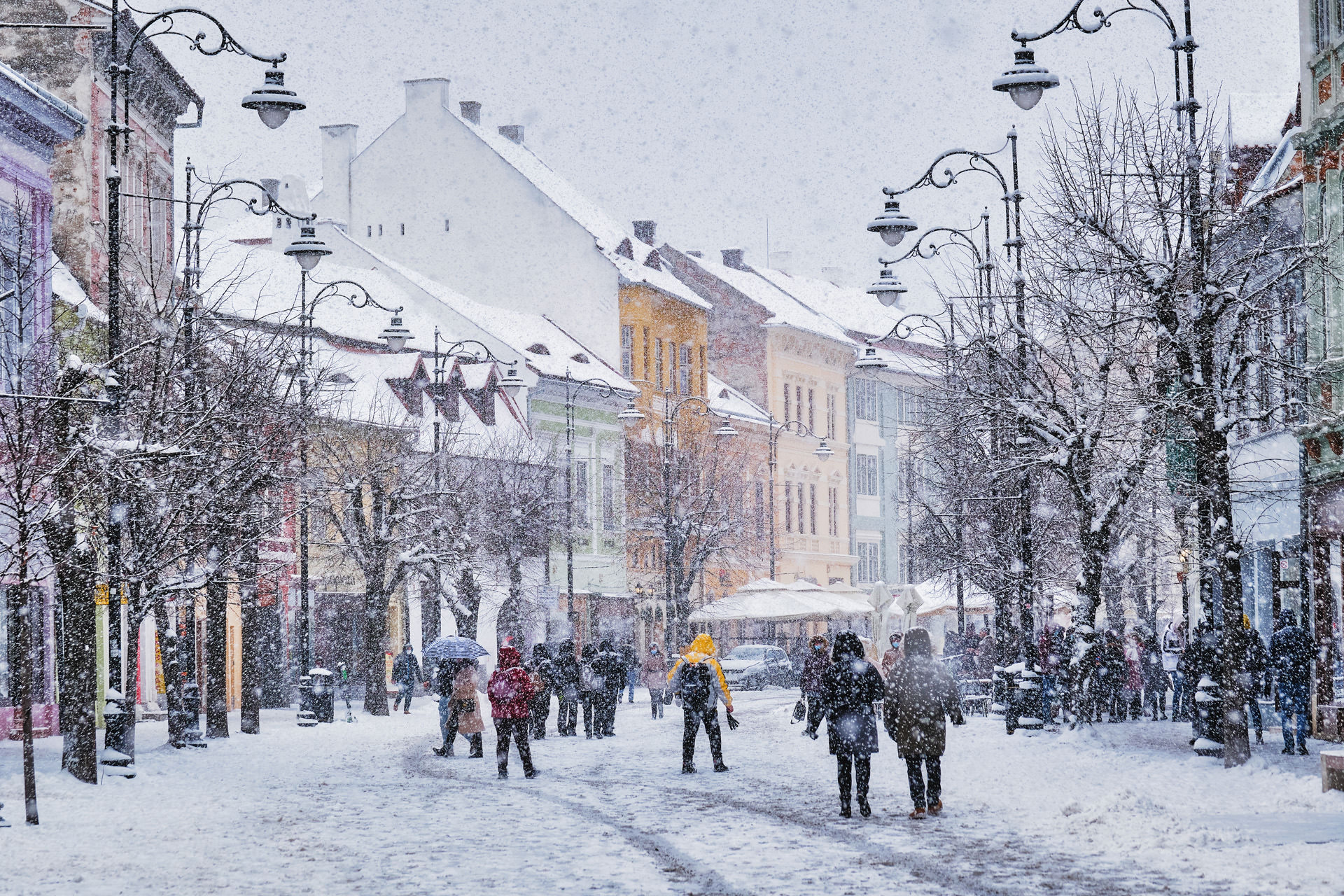

City of Sibiu Best Sights
The heart of the fortress is made up of three squares, beginning with the Grand Square, the civic center of the city of Sibiu, continuing with the Little Square, considered its commercial center and the small Albert Huet Square, dominated by the imposing Lutheran Cathedral. Connected through a series of small streets and passages, these lovely squares are surrounded by some of the most interesting and beautiful buildings of Sibiu.
We can start exploring the city from the Grand Square of Sibiu, dating back to 1366 and witnessing some of the most important events in the life of the fortress. The square complex was declared an architectural monument by UNESCO, featuring a series of superb buildings from various centuries. The most interesting of these include the Brukenthal Palace, the Council Tower, the Jesuit Church and several splendid townhouses. The elegant Brukenthal Palace was built between 1778 and 1788 on the western side of the square, as a city residence of baron Samuel von Brukenthal, who also built the palace located in Avrig as a summer residence.
BRUKENTHAL ART MUSEUM | OPEN: Wed.-Sun. / 10.00 – 18.00 | TICKETS: 50 lei/Adult (10 Euros)
The baron’s art collections were open to visitors from the end of the 18th century, making it the oldest museum in Romania. Today, the palace houses the Brukenthal National Museum, one of the most important in the country, with a series of extremely interesting and valuable collections. Among these, there are remarkable Romanian and European Art, the Brukenthal Library, as well as several museums that are located in other buildings throughout the city (history, contemporary art, natural history, history of pharmacy).
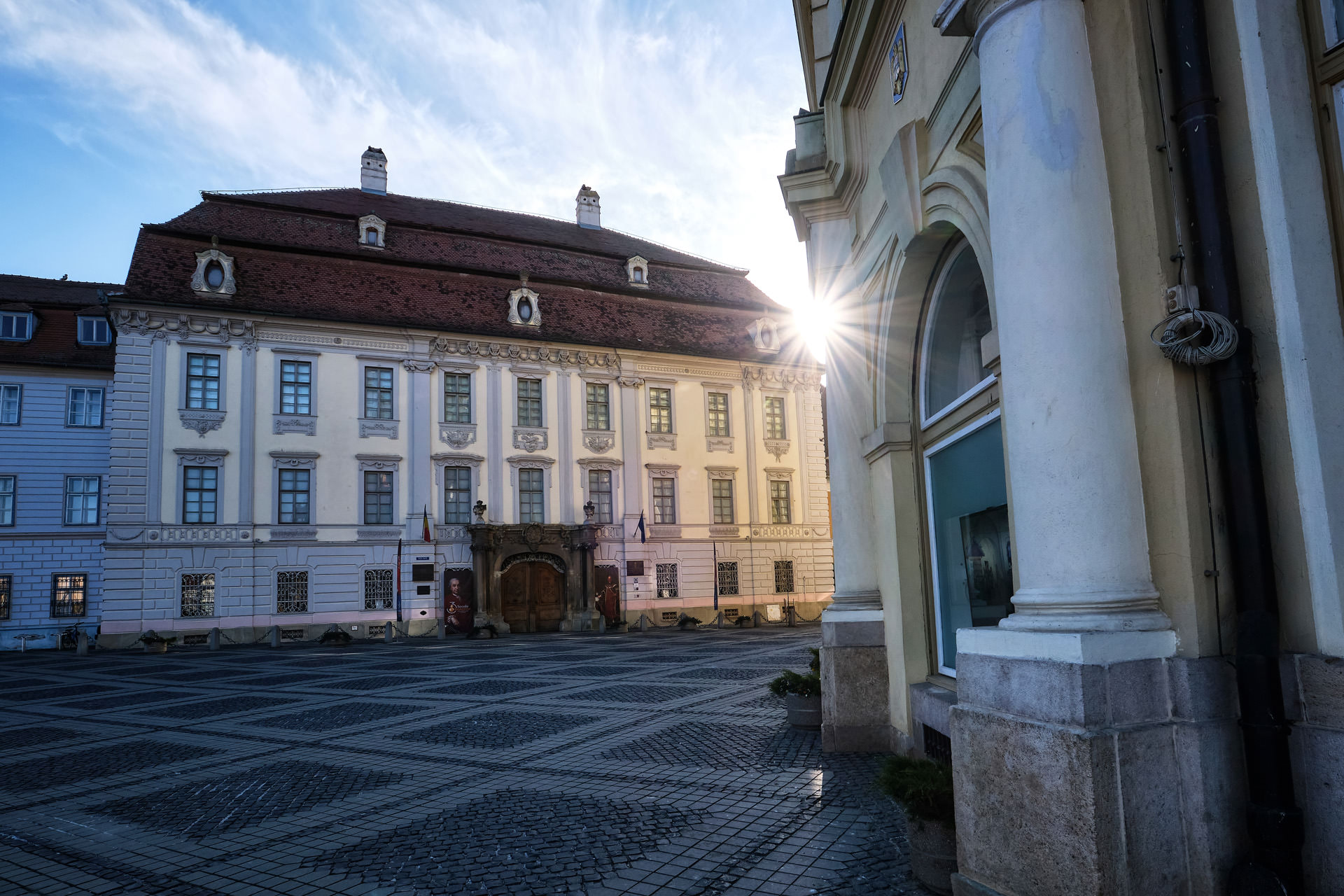
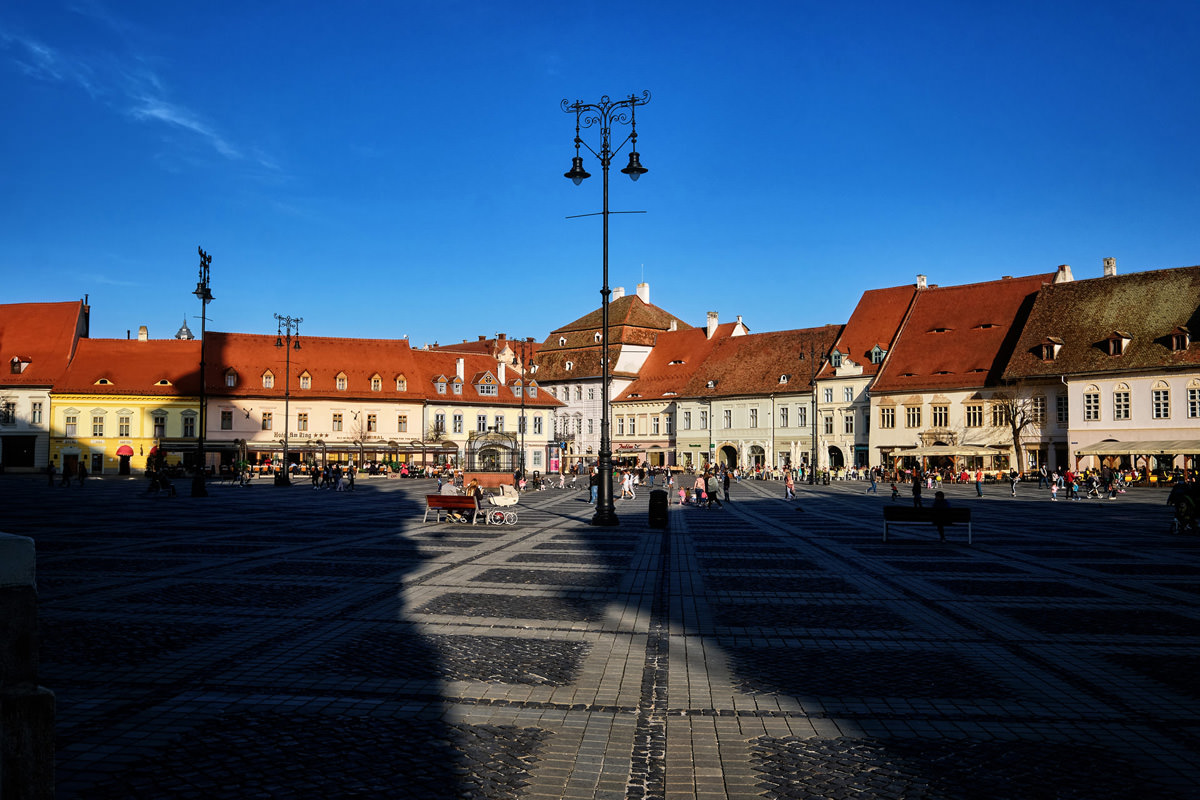
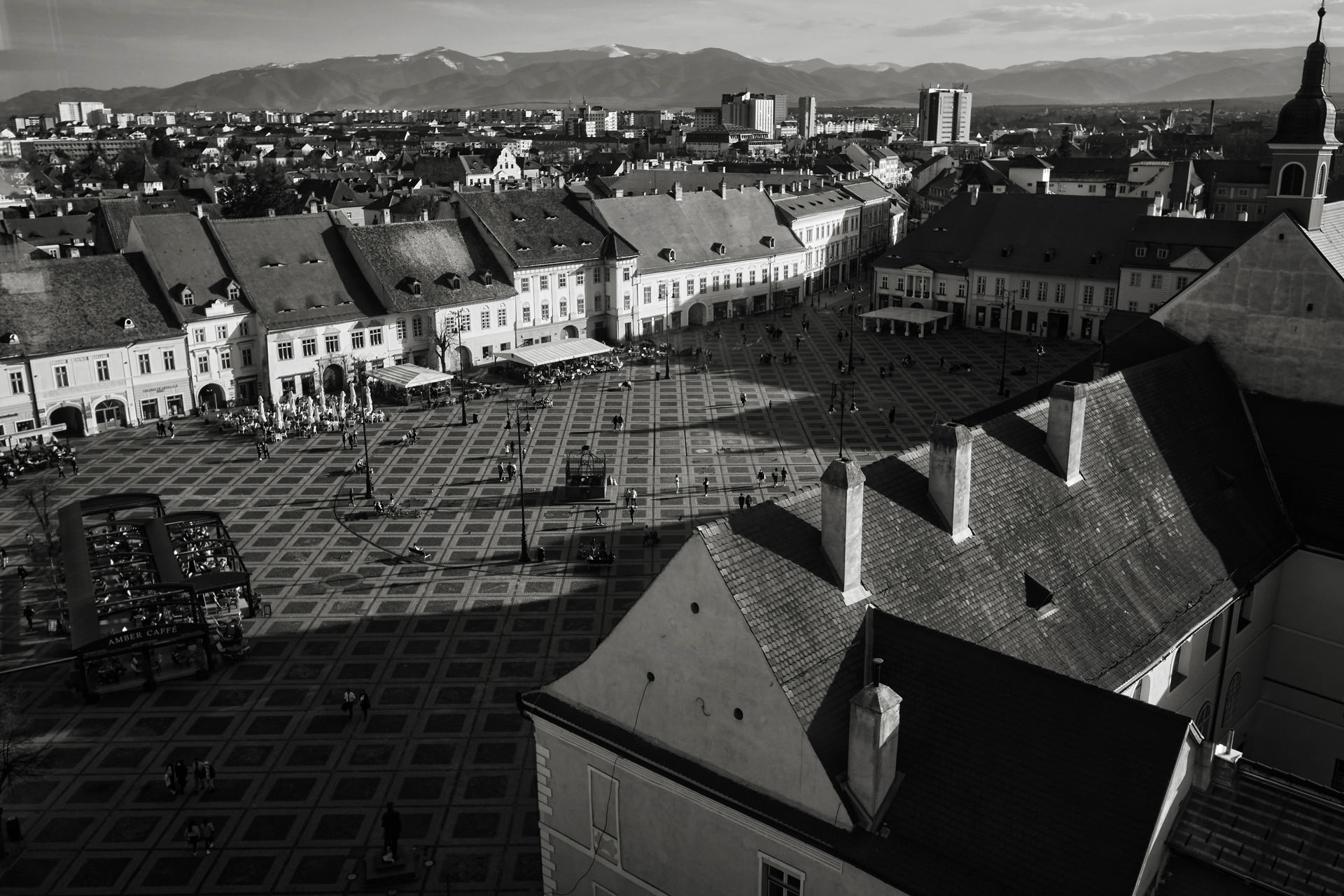
During the first years of the Communist era, the authorities wanted to demolish the medieval monuments on the northern side of the Grand Square to build tall apartment buildings. They were saved by the architect of Sibiu, Otto Czekelius!
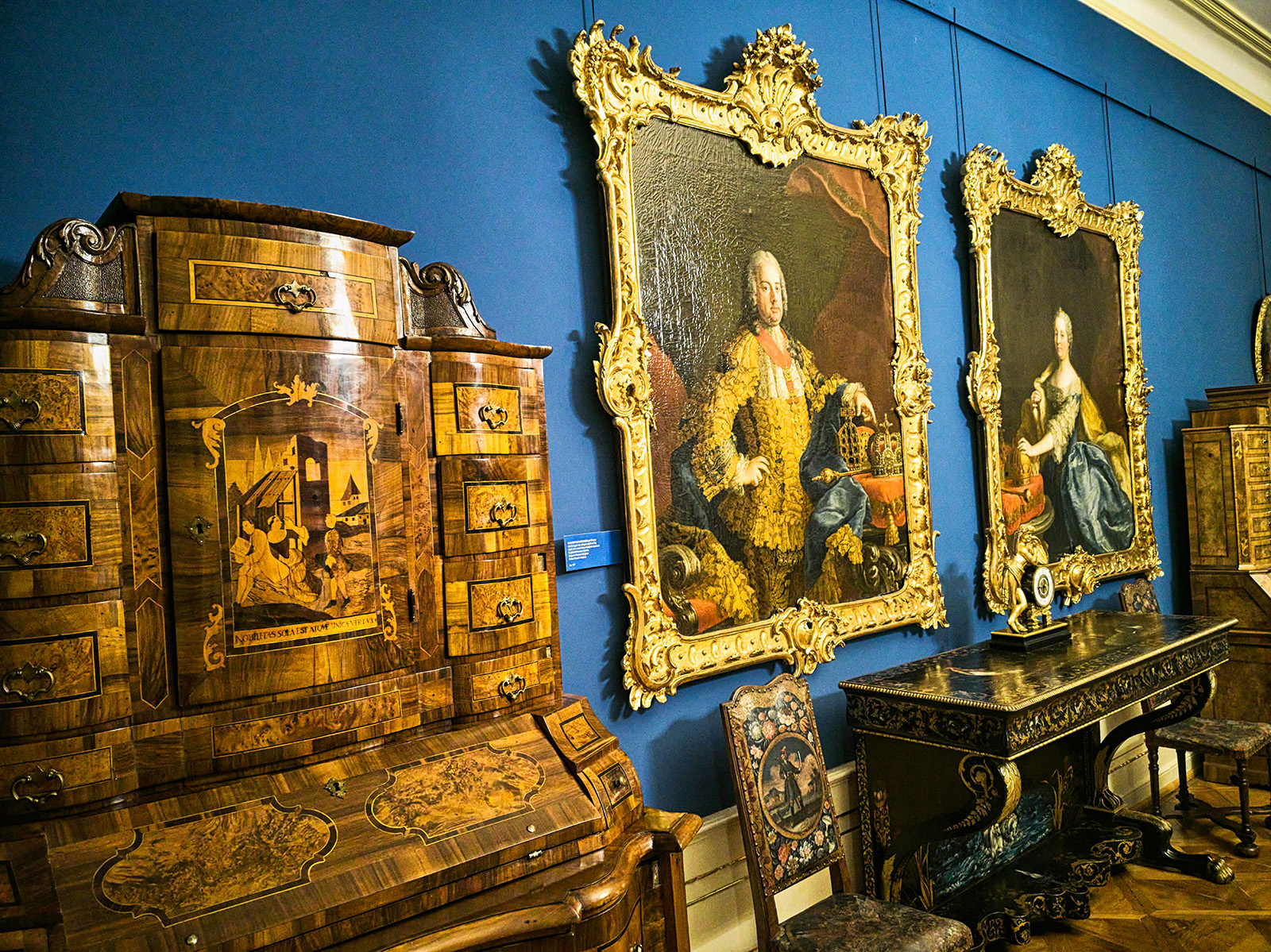
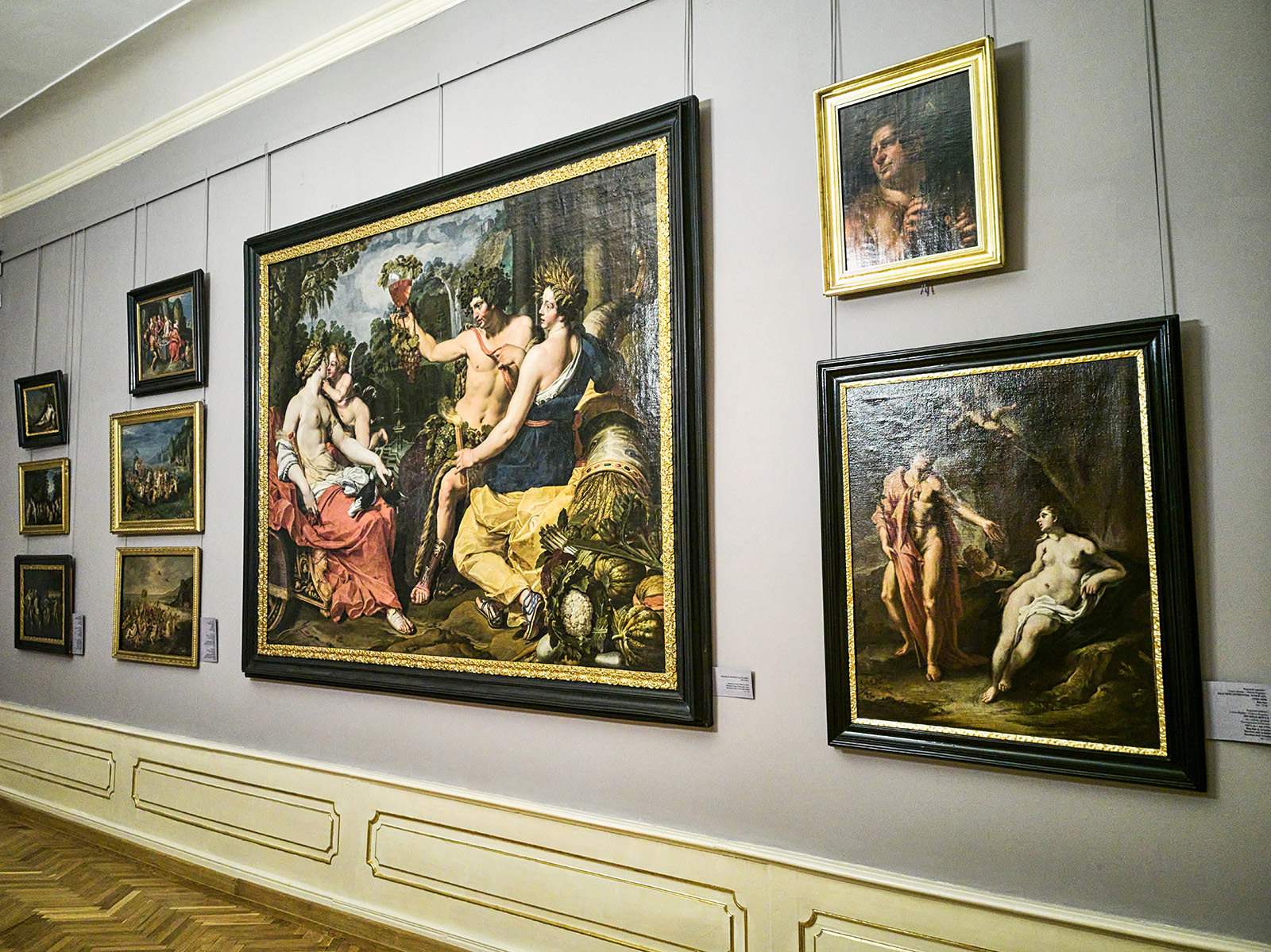
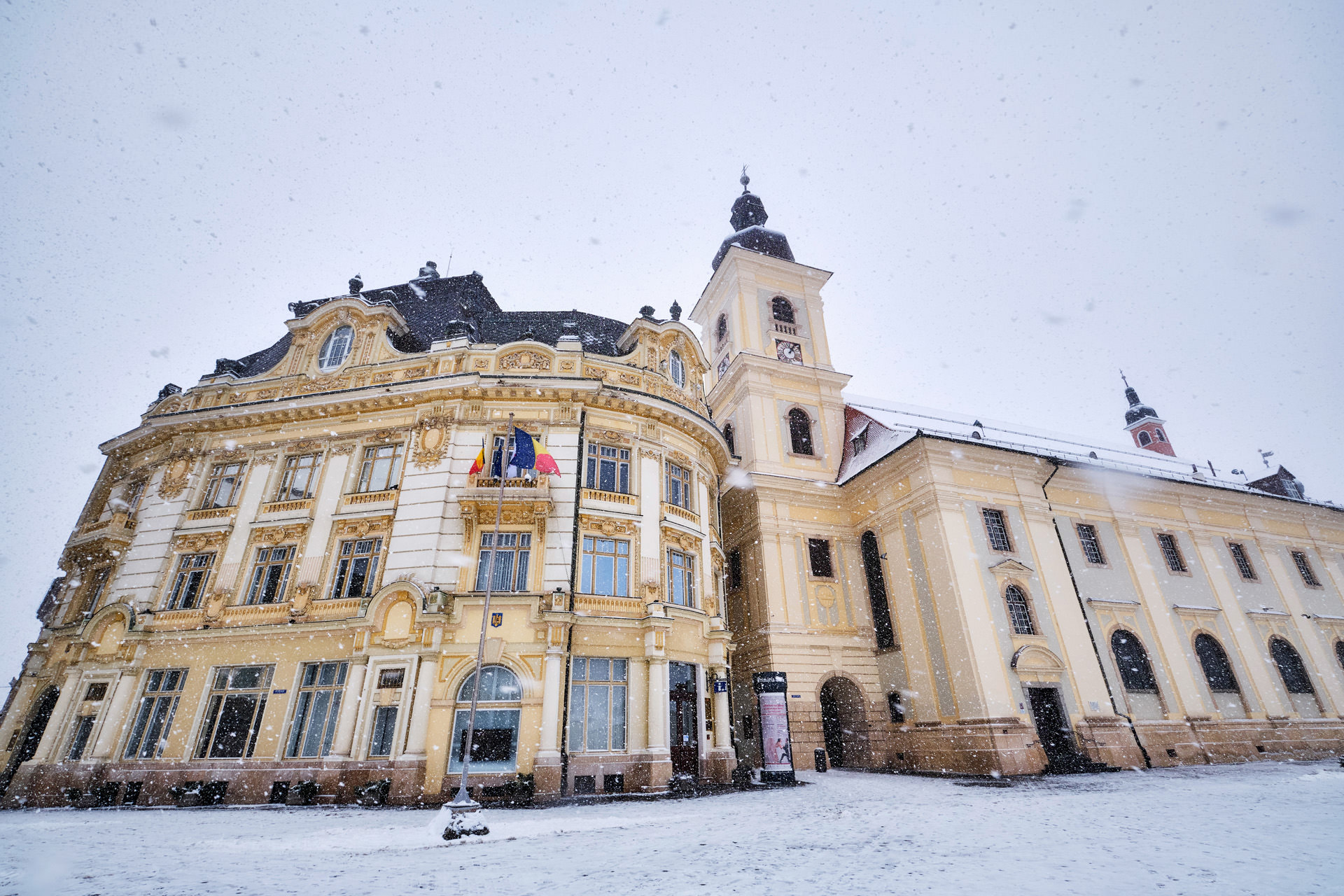
Apart from the Brukenthal Palace, the square is dominated to the north by the Council Tower, dating back to the 13th century and part of the second medieval fortification system. The tower used to include an entrance gate in the past, but its place was taken by a passage tunnel that connects the Grand and the Little Square. Through the centuries, the tower changed its appearance several times, today housing a small exhibition about the history of the city of Sibiu and featuring a clock on each side.
COUNCIL TOWER | OPEN: 10.00 – 18.00 | TICKETS: 2 lei/Adult
We can enter the tower through a small door located in the Little Square and from the last floor (141 steps), the astonishing panorama of the city is truly astonishing, with the peaks of the Carpathians being visible in the distance during clear days. Before leaving the Grand Square, there are still some buildings to admire, including the Town Hall, Roman-Catholic Church, Blue House, Haller House, Lutsch House or the statue of St. John Nepomuk, located in a courtyard behind the church.

The best place we can continue from the Grand Square is towards the Little Square of Sibiu, where there is an impressive concentration of historical buildings. We can pass through the passage under the Council Tower or try a narrow and less-known passage located a little further, called the Fellmonger Passage. In the past, Little Square was mostly used for commerce and the buildings from 14th to 16th century feature loggias and arcades that used to house craftsmen workshops.
Among the most interesting buildings, the House of the Arts is located on the northern side of the square. It was also known as the Butchers Hall and had other roles through the centuries. It has interesting architectural features and today houses several art collections and exhibits. Next to it, there is another interesting house, resembling the buildings of the Great Square and including inside the Frescoed Room, with superb wall paintings from the 17th century.



Further to the east, we can find an enchanting passage towards the Lower Town, known as the Goldsmiths’ Market Passage. The stairs begin under the Goldsmiths’ Stairs Tower and end in a charming little square below, from where a few picturesque cobblestone streets begin, with a specific medieval atmosphere. Next to the tower, there is the Goldsmiths’ Guild House, with interesting architectural features. On the eastern side of the square there is also a historical building that houses the Pharmacy History Museum, a unique attraction that includes over 6.000 exhibits related to the development of pharmaceutical techniques over time.
On the western side of the square, we can admire another complex of superb buildings, including the Hermes House (Museum of Ethnography), Luxemburg House and others. From the Little Square, we can also go down into the Lower Town along the Ocnei Street that first passes under the Bridge of Lies, a marvelous monument located in the northern part of the square, next to the House of the Arts. It was built from cast iron in 1859 and according to legends, it will crash when someone tells a lie while crossing over.
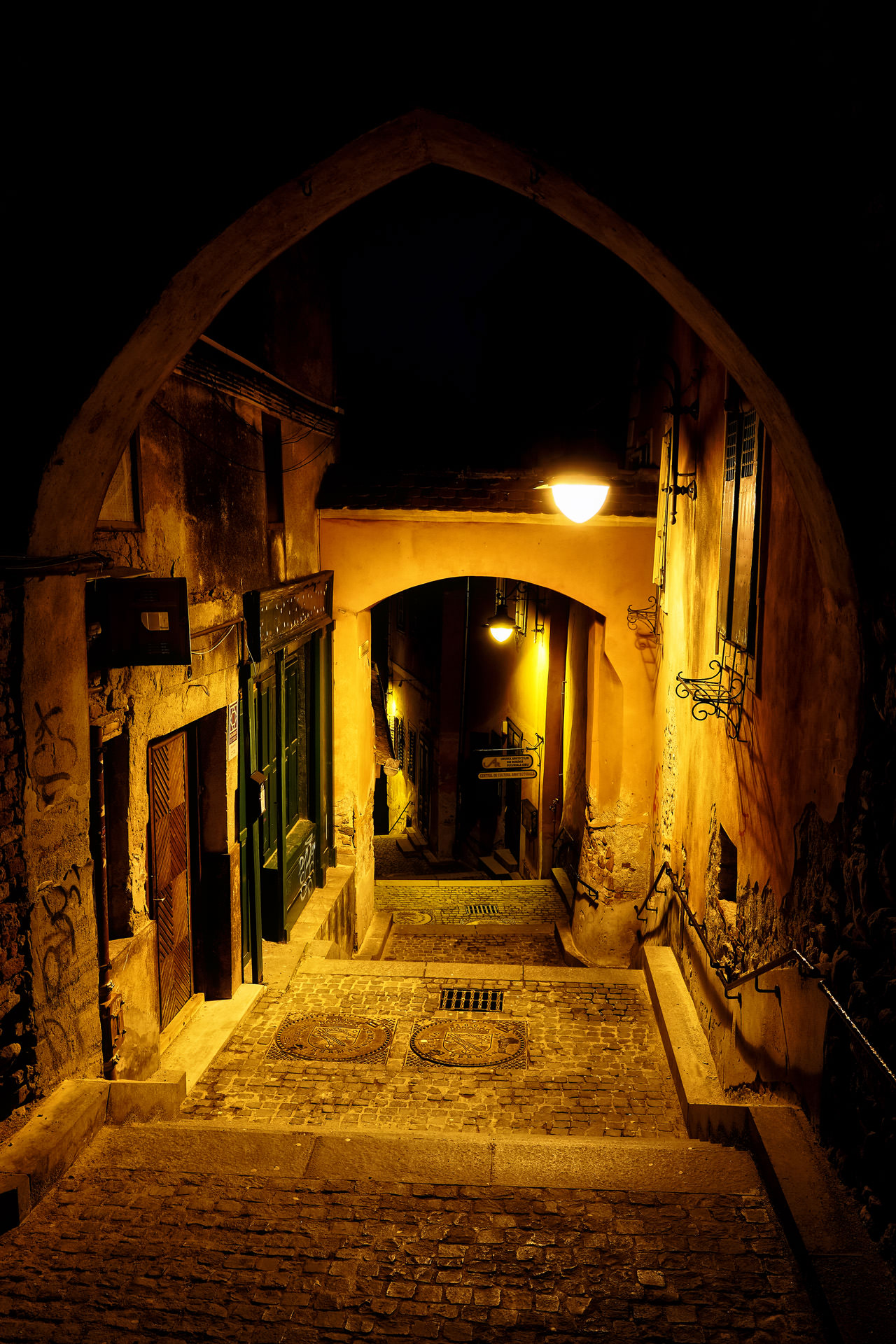
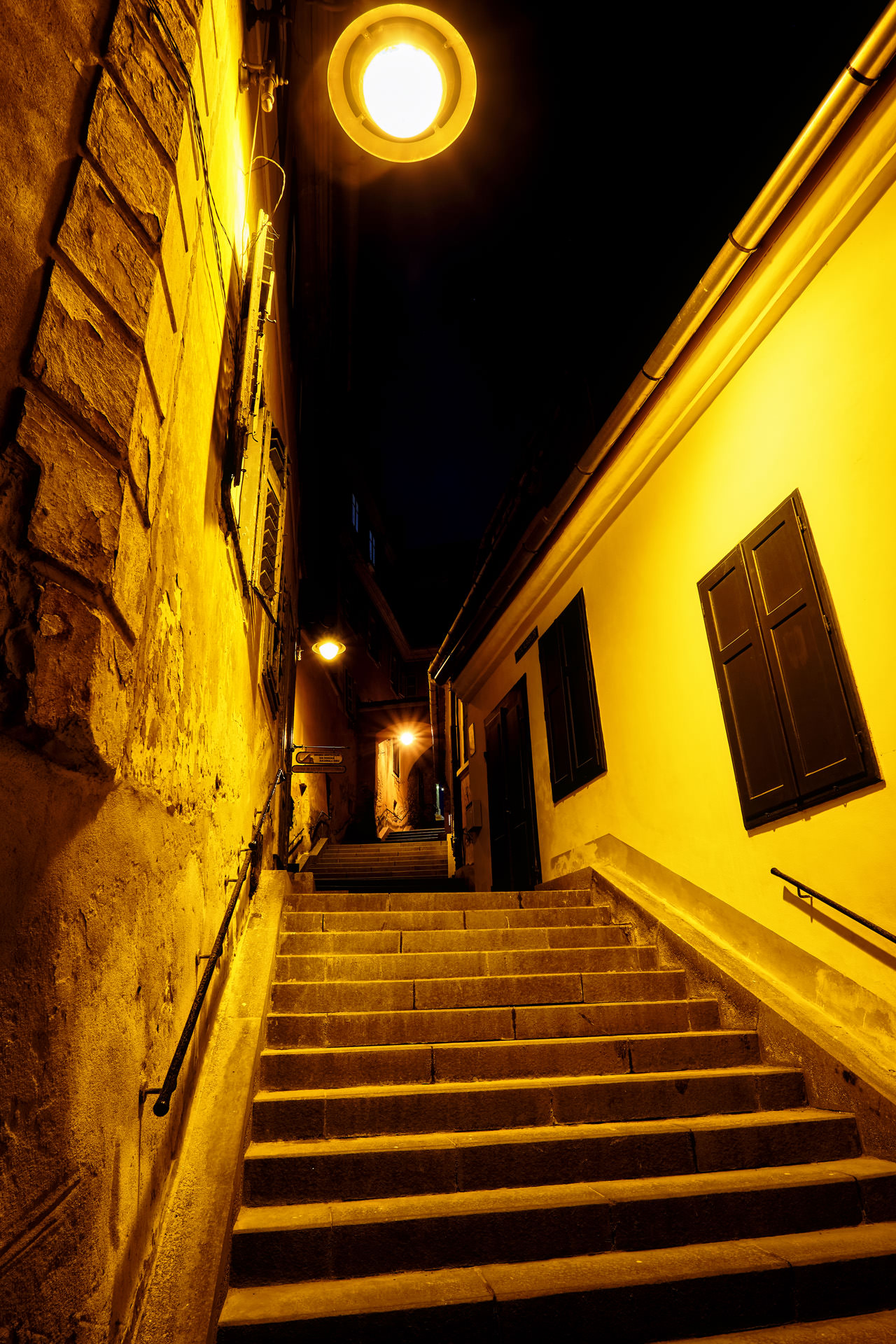

Going over the bridge, we enter the small Albert Huet Square, dominated by the silhouette of the imposing Lutheran Cathedral of “St. Mary”. This area can also be reached from the Grand Square, the three being a complex separated by a row of buildings. The Huet Square was born inside the first fortification system of the city of Sibiu, after it fully encompassed the Upper Town. Most buildings around the cathedral date between the 15th and the 18th centuries. The cathedral is among the most impressive Gothic structures in Romania, belonging to the largest Lutheran community in the country.
ST. MARY CATHEDRAL | OPEN: 10.00 – 20.00 (depending on religious service) | TICKETS: 15 lei/Adult (3 Euros)
It was built over a Roman basilica dating from the 12th century, its current appearance dating from 1520. Among the most marvelous features, we can admire the very tall tower, the interior sculptures and the unusual Masonic symbol above the organ. The most interesting monuments around the cathedral include the Parish House, the Stairs’ Tower, the Brukenthal Highschool and the statue of bishop Teutsch. Behind the buildings on the northern side, there is the Stairs Passage that used to connect the Upper and Lower towns. The old medieval fortifications are still visible in this area, with thick brick walls and arches.
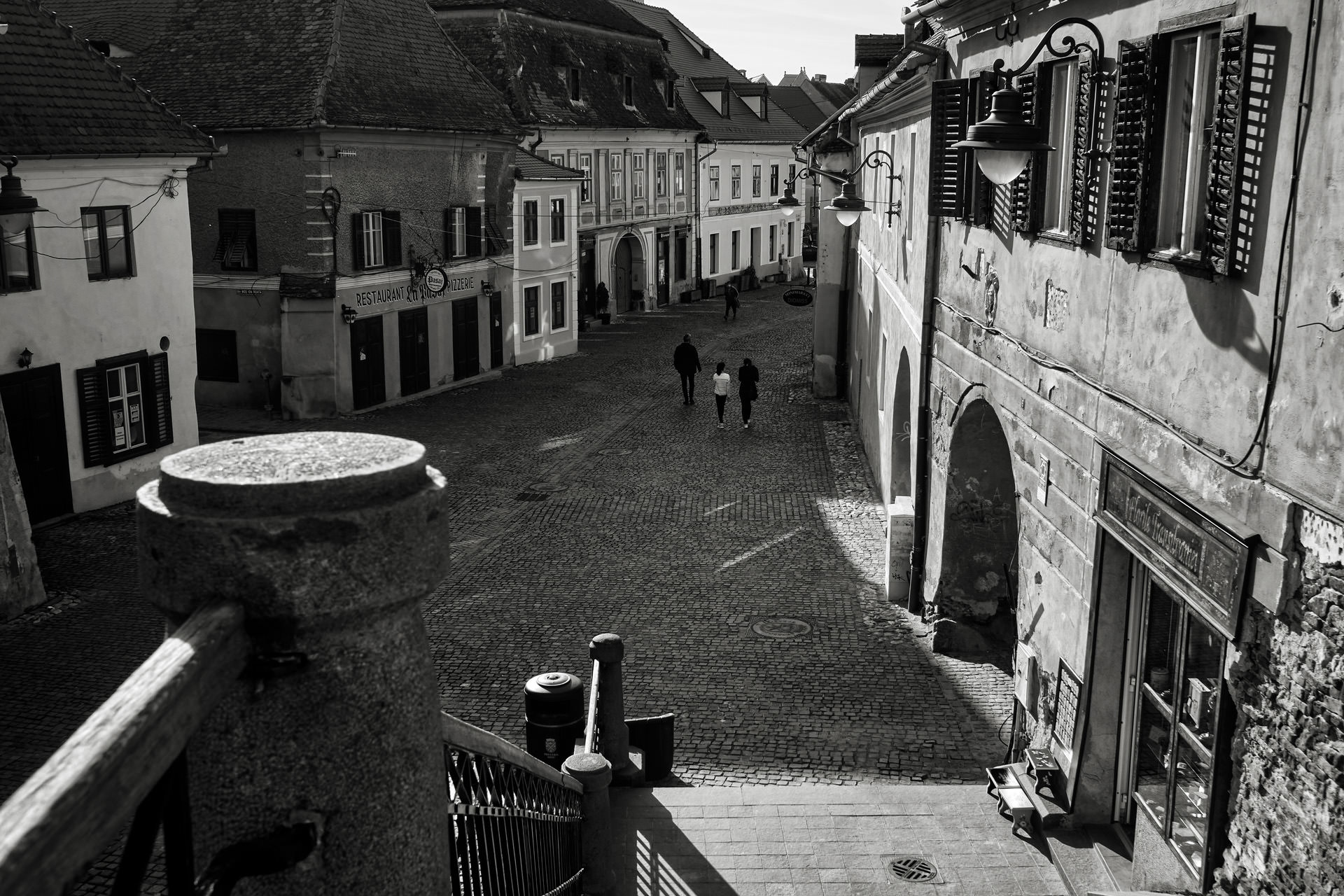

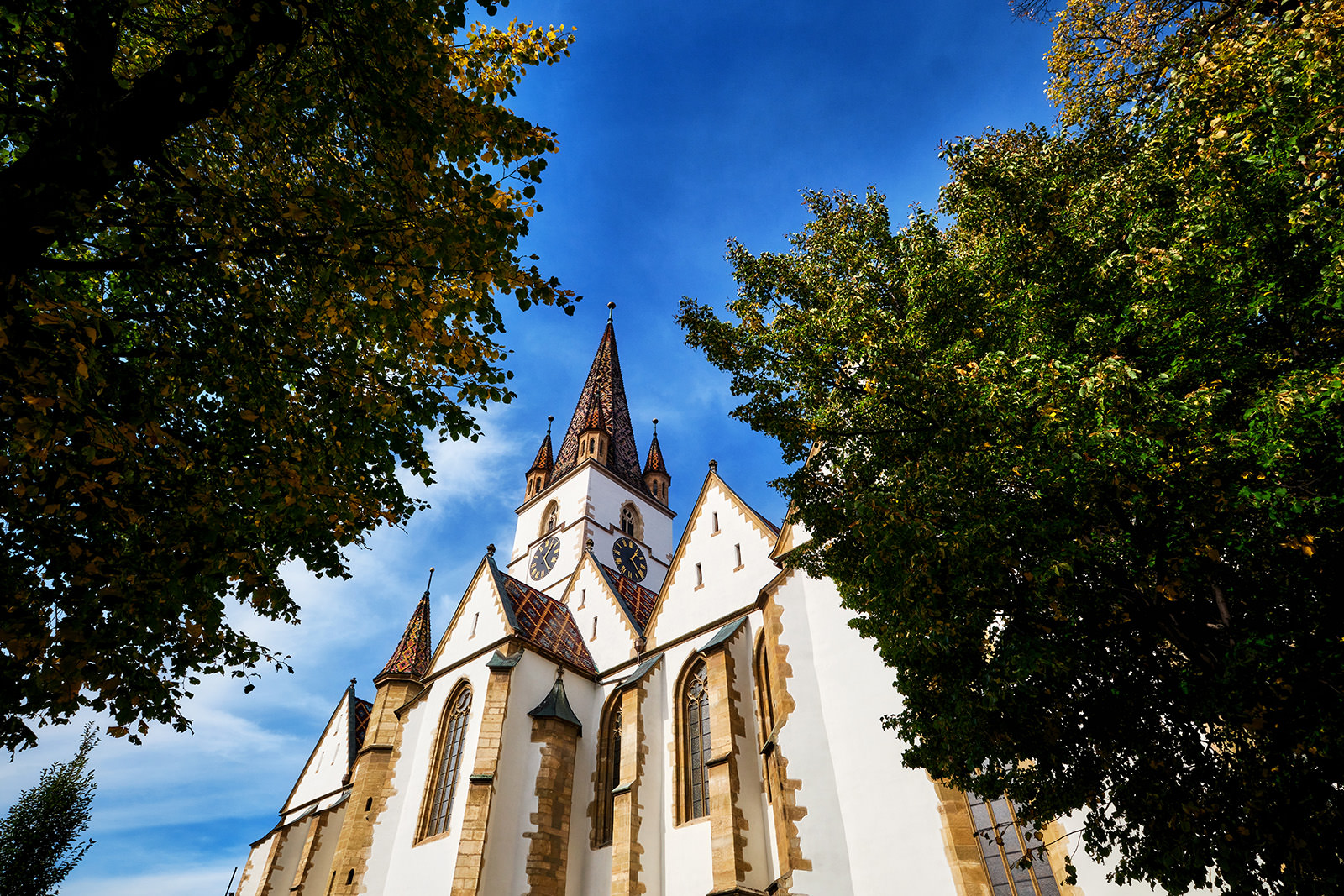
The ferula of the Evangelical Cathedral of Sibiu is unique in Romania, including 67 tombstones of important personalities from medieval times. These were moved from the church nave and the last tomb was that of baron Samuel von Brukenthal!


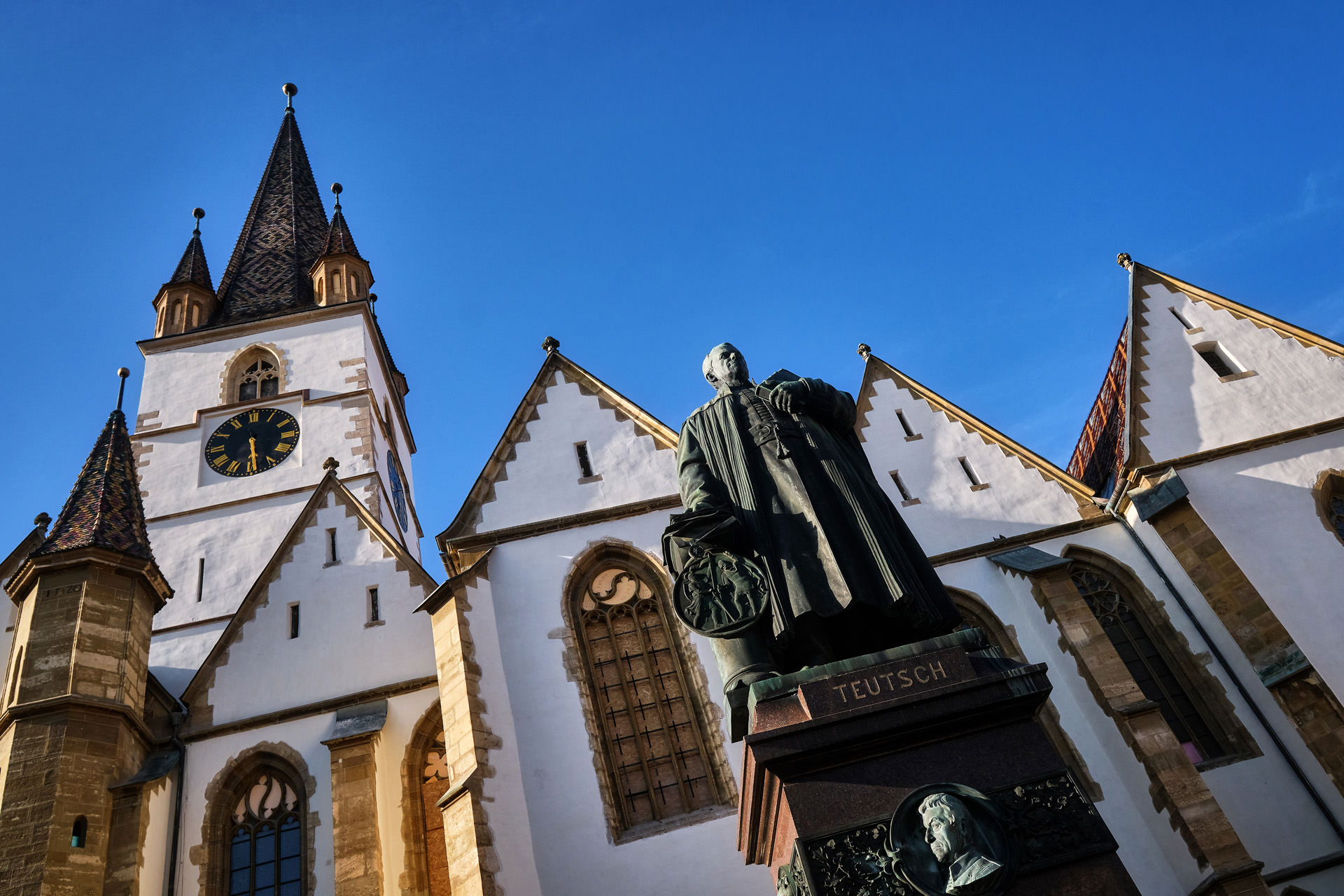
The Upper Town spreads to the east, west and south of the three markets, being surrounded by a series of parks and gardens created over the old fortifications that can still be admired in several places. Beginning from the Grand Square, there are still many amazing monuments to visit in Sibiu, starting with the old towers and bastions. The best conserved are located along the southern edge of Upper Town, beginning with the imposing Haller Bastion, rising at 9 meters and dating from the 16th century, located east of the markets. Continuing towards the south-west, we first pass by the building of the Natural History Museum which is also part of the Brukenthal Museum experience.
Next appears the majestic shape of the Thick Tower, so called due to its unusual shape that extends out from the walls. Developed on several levels and having a platform on its upper part, it is now the house of the Sibiu State Philharmonic. A section of the southern medieval walls can be visited by going further to the west, located between the Carpenters’ and Potters’ towers. These date from the 14th century and nearby there are other two impressive towers, the Ironsmiths’ Tower and the Harquebusiers’ Tower. On the western side of the fortress there is also the Soldisch Bastion, although not as well preserved as the one to the east. It dates back to the 17th century and features an old marble emblem on its walls.

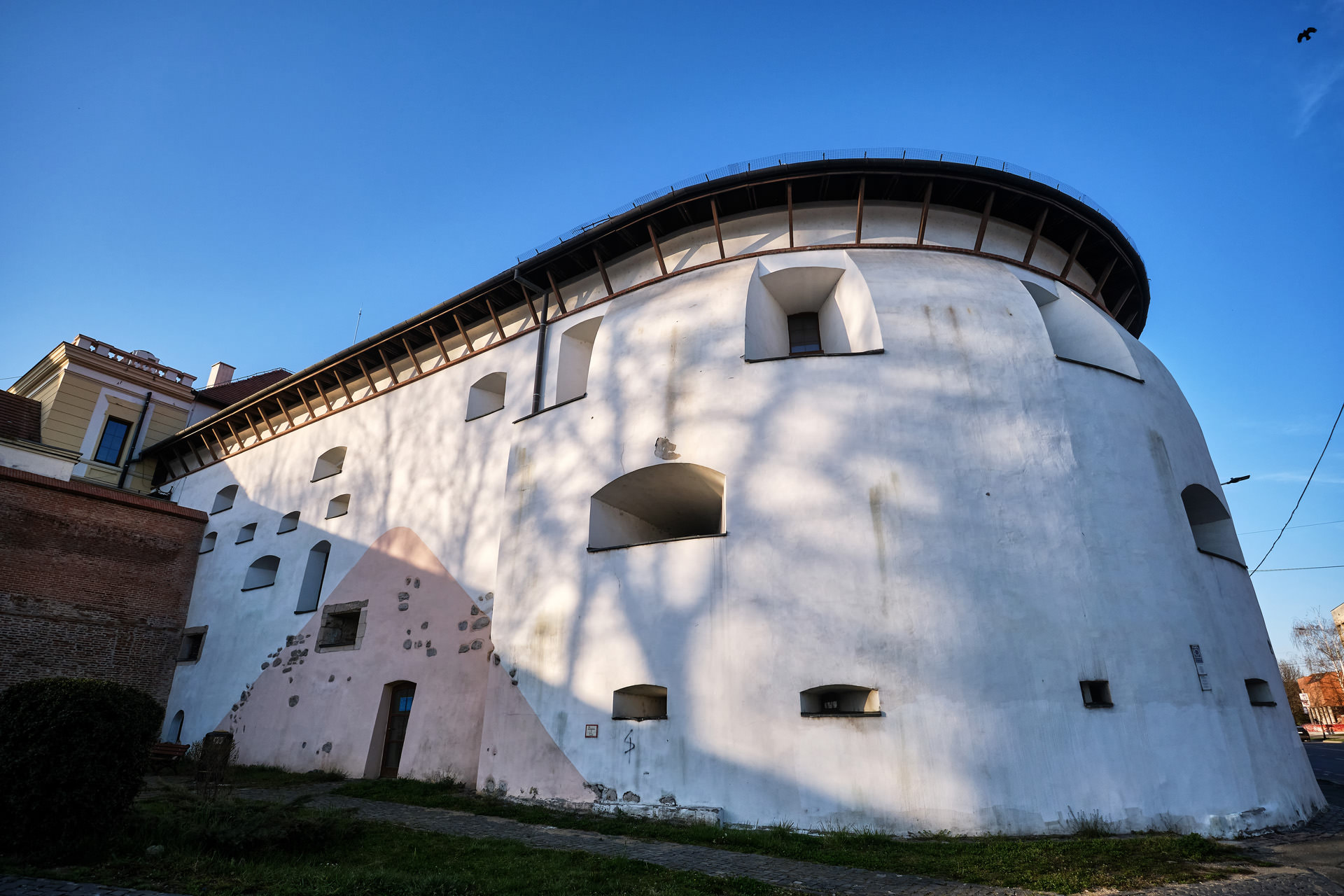
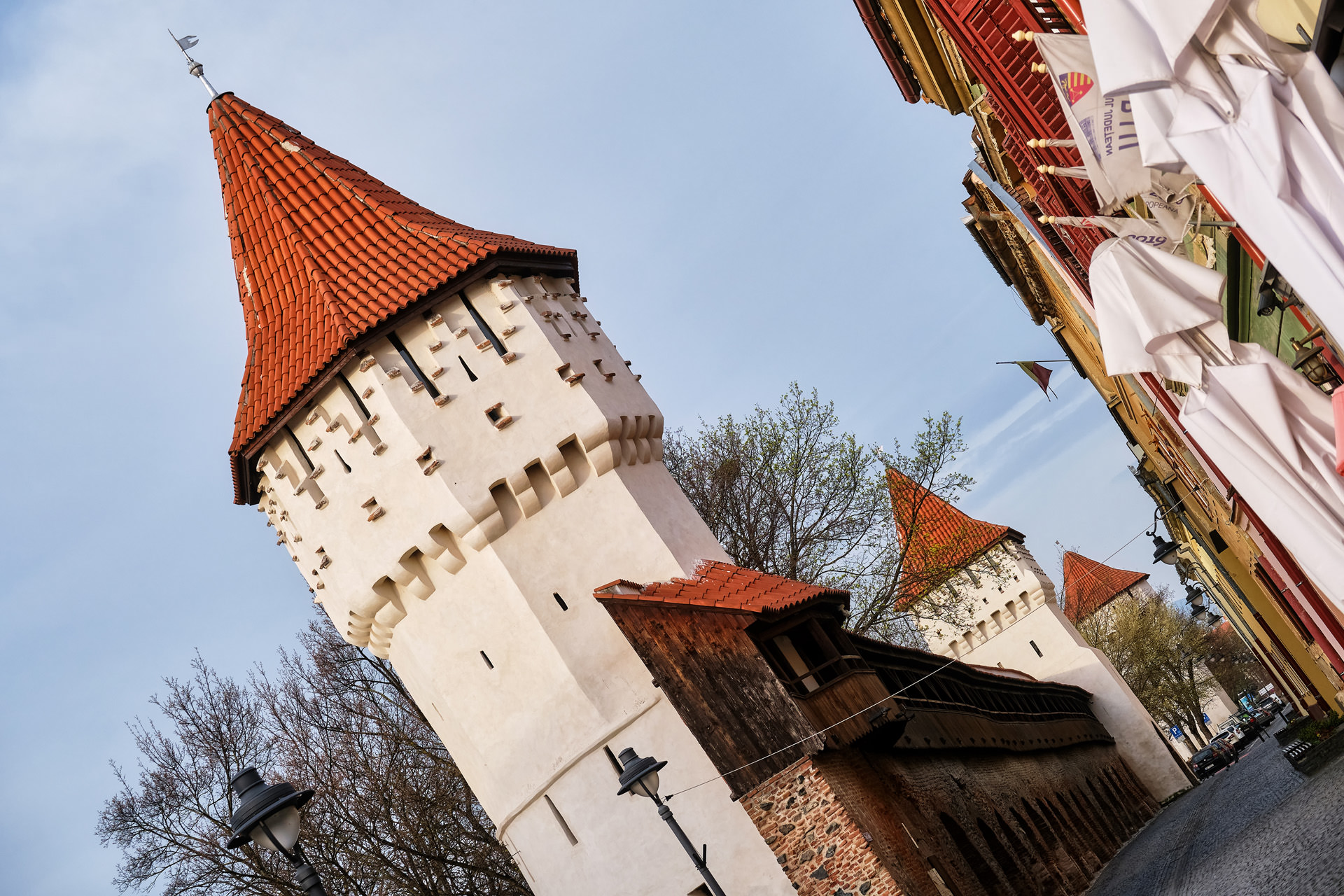
The Upper Town also includes several monuments located along the inner streets. Among the most elegant and interesting are the Mitropoliei and Nicolae Bălcescu streets, both going from the Grand Square towards the west. Wandering along these streets, we can best observe the famous „eyes of Sibiu”, small openings located on the shingle roofs of the buildings. They are actually skylights and were created to insure the proper airflow of the attics.
HISTORY MUSEUM | OPEN: Wed.-Sun. / 9.00 – 17.00 | TICKETS: 36 lei/Adult (7 Euros)
Between the Mitropoliei and Alexandru Odobescu streets, there is the splendid Altemberger Complex, including the house, the loggia, the tower and several other structures, representing one of the most beautiful examples of Gothic architecture in Romania. This used to be the headquarters of the Sibiu Town Hall for four centuries, today housing a history museum, with some amazing exhibits. Going along Mitropoliei Street, the first monument we encounter is a small church with Baroque architecture, followed by the Caryatids House, with two statues that hold the balcony.
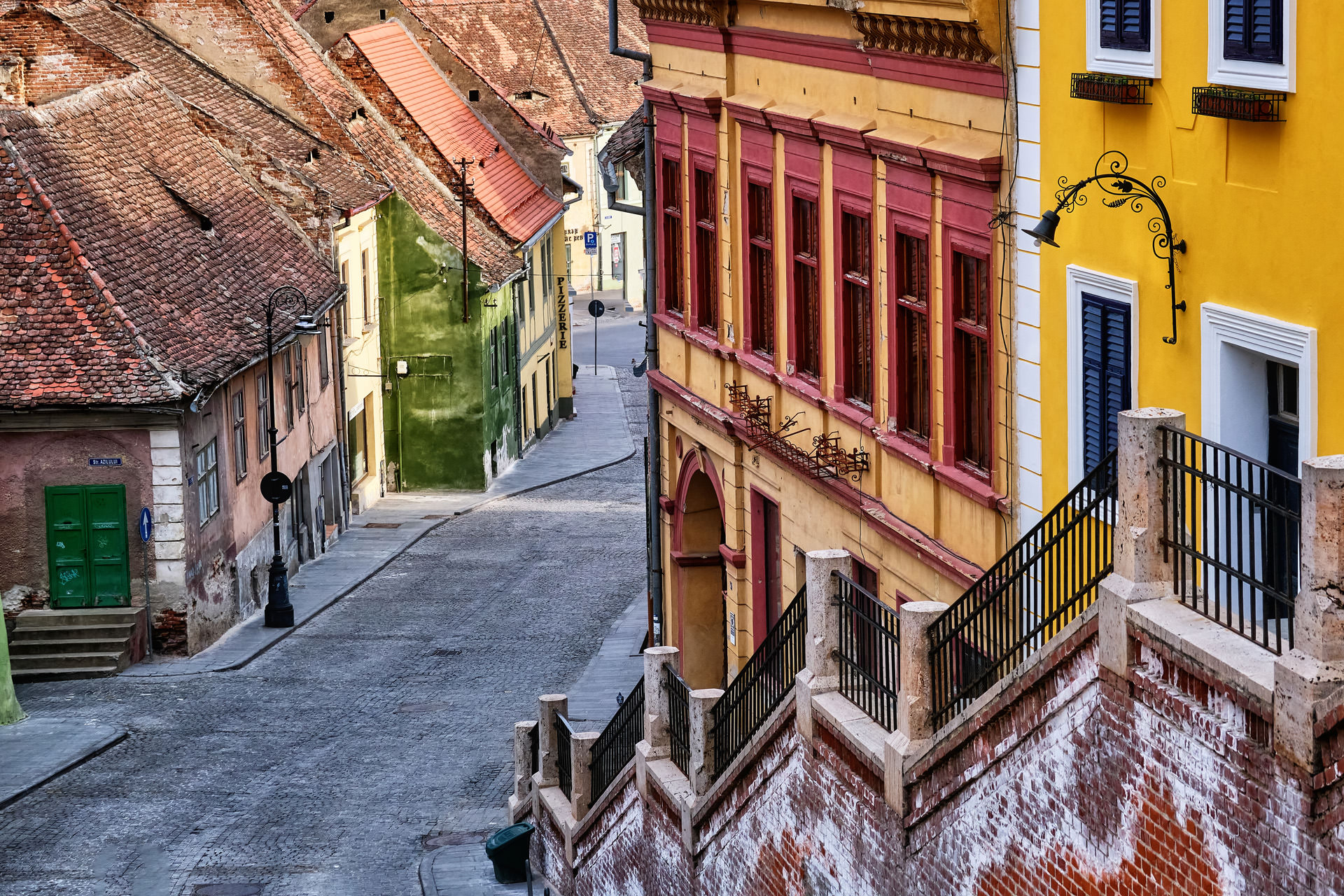
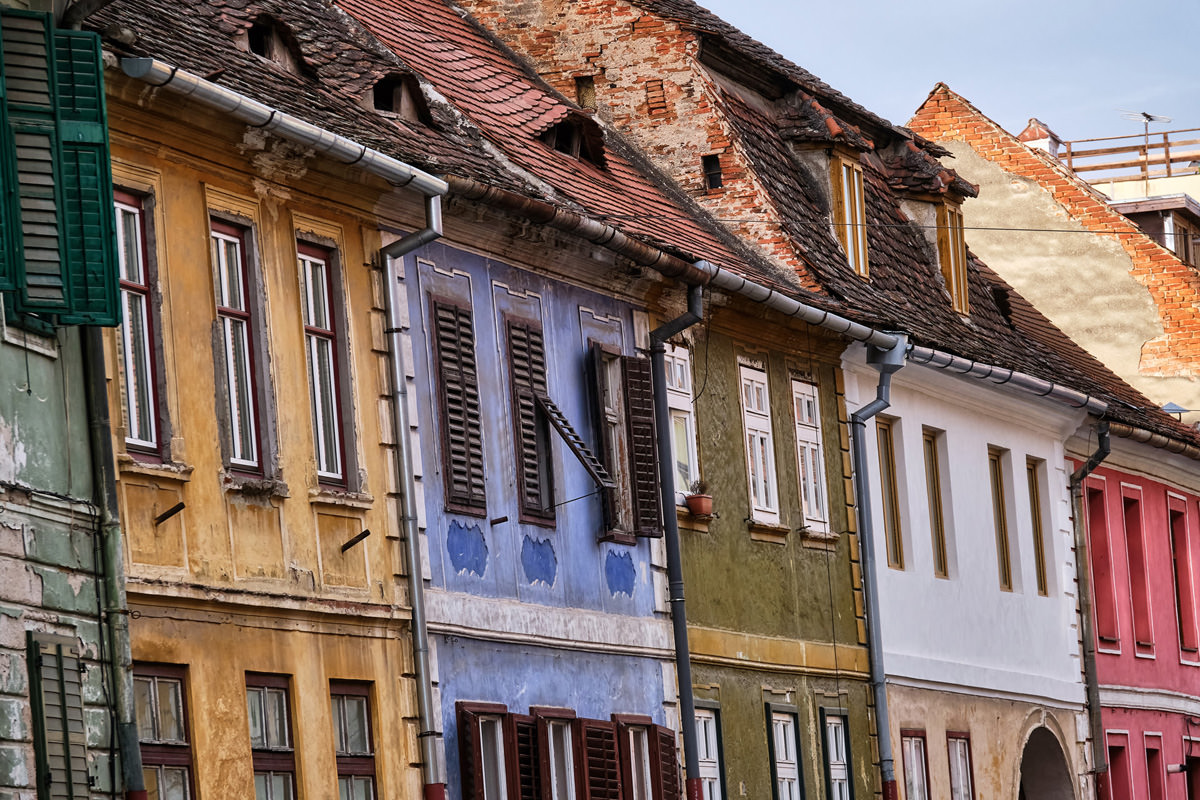
A little further, we can admire the beautiful Orthodox Cathedral of the Holy Trinity, built in 1904 in a superb Byzantine style and including impressive interior paintings. At the end of the street, there is the Lutheran Church of St. John, built in a Neo-Gothic style at the end of the 19th century. On Nicolae Bălcescu Street there are other interesting historical buildings, as well as restaurants and shops.
Another enchanting street starts from the Grand Square and goes east. The Avram Iancu Street features several beautiful monuments, including the St. Ursula Roman-Catholic Church and the Ursuline Monastery. Originally a Dominican monastery built in 1479, it was later taken by the Lutheran church and finally by the Roman-Catholics through the Ursulines nuns that built a school for girls within.
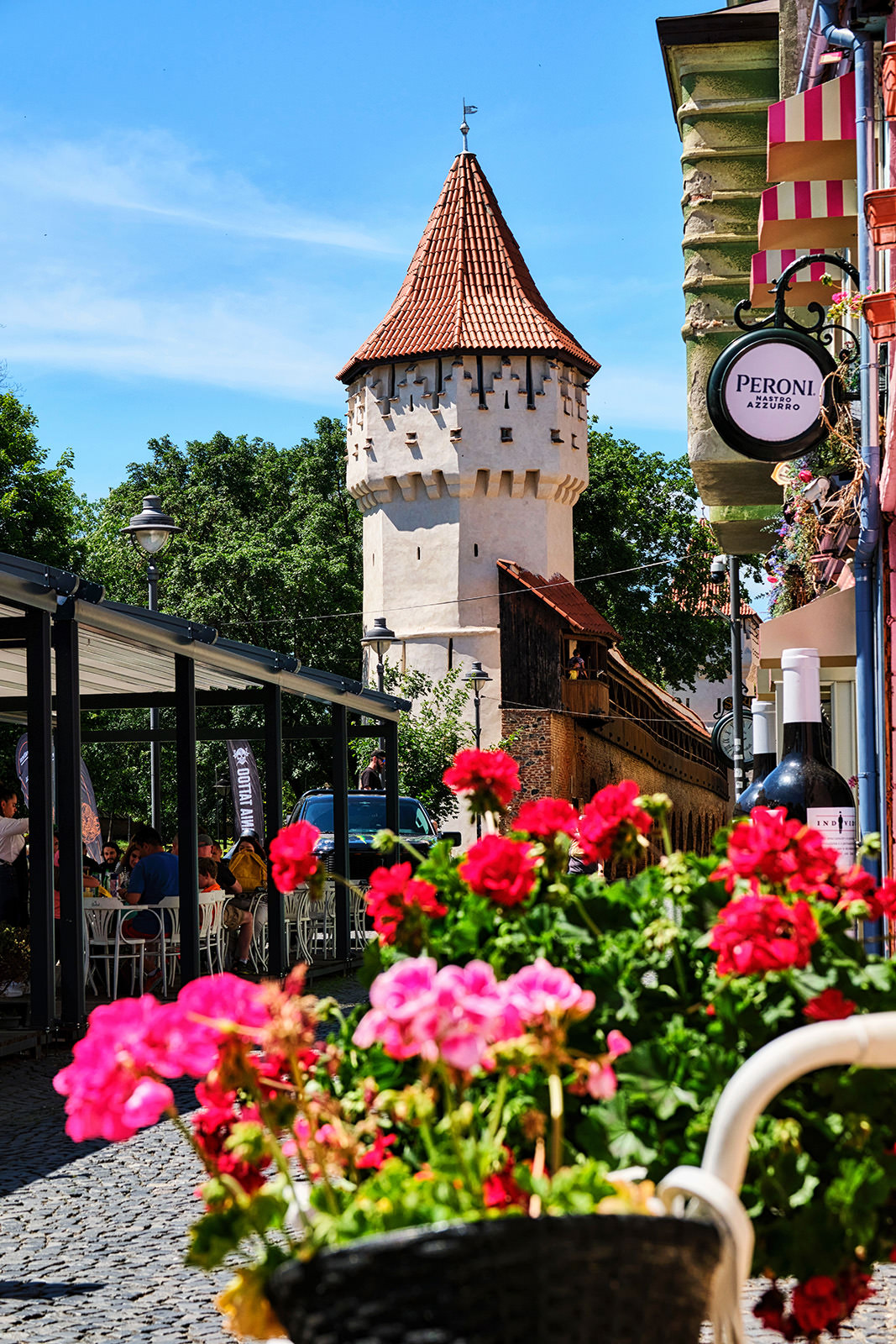
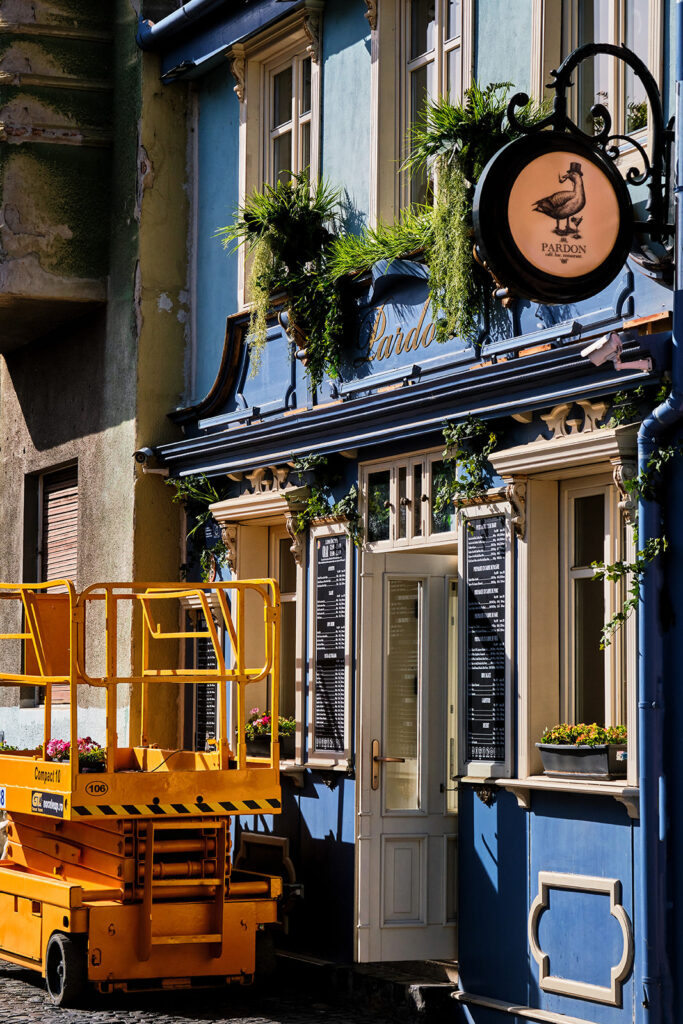
The Lower Town developed to the north of the Upper Town, towards the small Cibin River. It was also surrounded by fortifications, a few still preserved to this day. The streets of this area still bear the name of the old guilds in the fortress of Sibiu, showing the areas where they usually lived or worked. A walk along these atmospheric little streets is an authentic experience, far from the hustle of the Upper Town.

Leaving the city of Sibiu, there are plenty of places to see fairly close to the city, the entire area surrounding it being known as Mărginimea Sibiului, an extremely enchanting destination with authentic rural architecture and enduring pastoral traditions. There are 18 villages to the southwest of Sibiu that are included in this area and all have amazing cultural sights to discover, including old churches and museums.
Perhaps the most insightful attraction can be found in the village of Sibiel, where we can visit the fascinating Glass Painted Icons Museum, the largest of its kind in the world and a true temple of rural religious art in Romania. The museum has a collection of over 600 glass icons donated and sometimes painted by peasants from the villages of Transylvania and beyond. These were gathered by a priest of Sibiel and can now be admired inside.
About 5-6 km south of Sibiu, surrounded by a lovely natural park known as Dumbrava Sibiului, we can find the Astra National Village Museum, one of the biggest and best in the country and even Europe. Over time, countless treasures of the traditional rural civilization of Romania have been gathered inside the park, with old houses and buildings from all around the country being restored and displayed in a fascinating manner. Each home and object has a story to tell and forms a complex image of the rural history in Romania.



ACCOMMODATION IN the city of SIBIU
Artisans Boutique Villa 5*
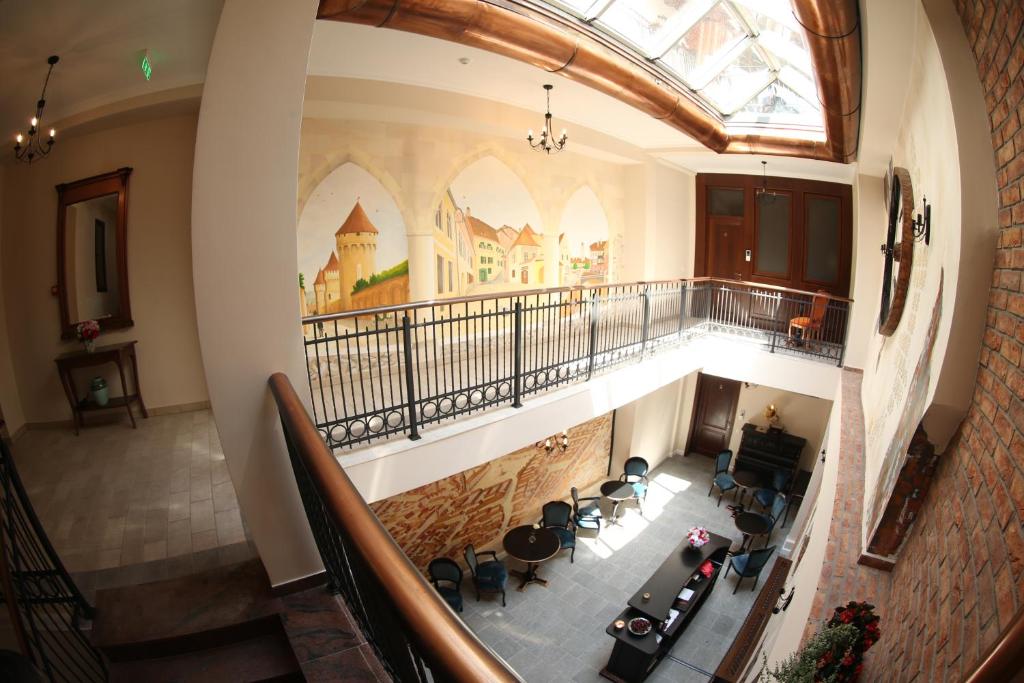
9.4 Rating from 406 Reviews!
Located about 500 meters from the Council Tower of Sibiu in a peaceful area, this highly appreciated villa offers a unique experience, featuring splendid ambiance in all spaces, including the fully-equipped rooms!
ART HOTEL 4*
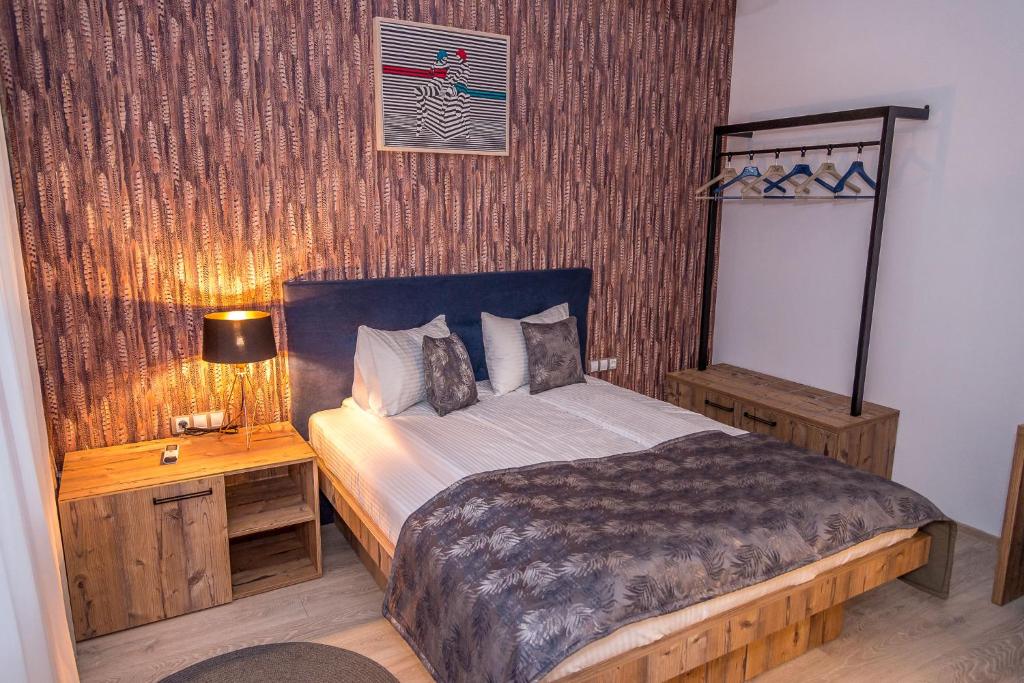
9.4 Rating from 2260 Reviews!
This exquisite hotel is located just a few minutes from the Grand Square of Sibiu, featuring amazing rooms with beautiful design and all amenities, private bathrooms and breakfast in the on-site restaurant!
Hermanni House 3*
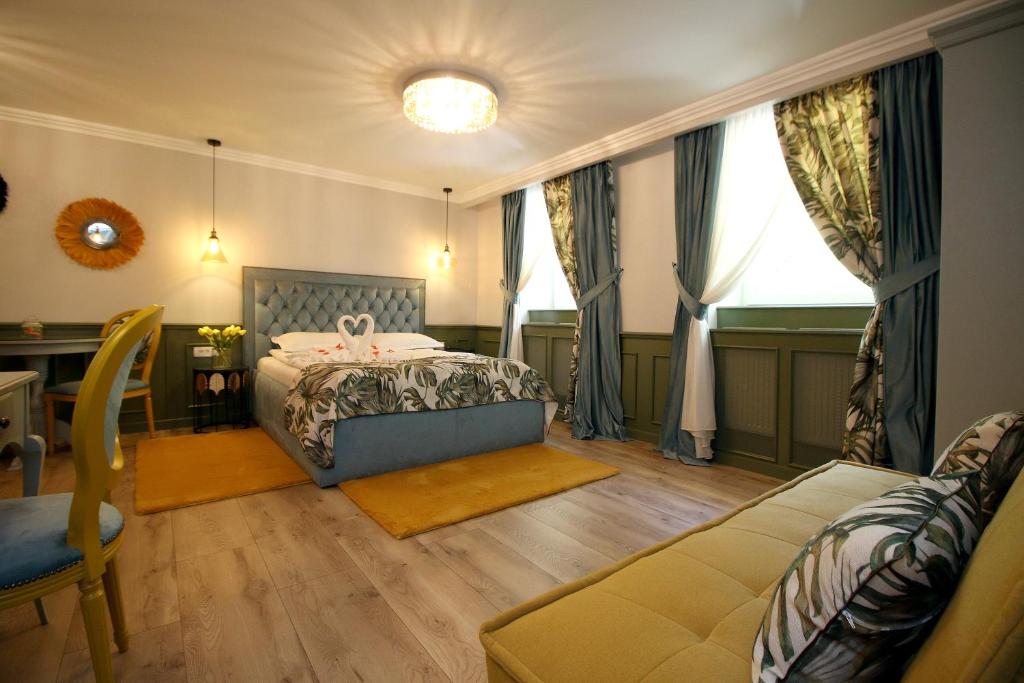
9.8 Rating from 779 Reviews!
Located just 300 meters from the Stairs Passage, this astonishing guesthouse has almost perfect reviews, superb design and excellent amenities in each rooms and studio. It also features a kitchen and a terrace!

BEST RESTAURANTS IN SIBIU
- Crama Sibiul Vechi – A. Papiu Ilarian St. No. 3 – Probably the best place to sample delicious traditional Romanian and Eastern European food in a magical atmosphere, inside an old wine cellar!
- Kulinarium – Little Square No. 12 – A great restaurant right in the heart of Sibiu, offering amazing traditional food at reasonable prices. The pan specialties are definitely worth a try!
- Hermania Restaurant – Filarmonicii St. No. 2 – Located inside a historical building, this traditional restaurant serves authentic Saxon recipes made from their own fresh ingredients!
- Pasaj Restaurant – Turnului St. No. 3A – This cozy little restaurant is located in a pleasant area and features delicious local and international cuisine, including burgers, pasta and pizza!
- Old Lisbon Restaurant – Targu Pestelui St. No. 4 – A unique restaurant in Sibiu, it offers traditional Portuguese food and other European delicacies, inside a welcoming location close to the city center!
- Benjamin Steakhouse & Bar – Xenopol St. No 1 – Featuring delicious steaks and burgers, including the famous Black Angus delicacies, this restaurant is located very close to the Grand Square of Sibiu!
- She’s Green Restaurant – Timotei Popovici St. No. 19 – Offering exclusively vegan and raw-vegan recipes, this restaurant features fresh and natural ingredients for people looking for this option!
